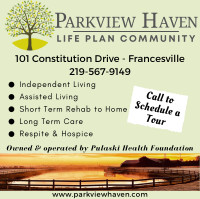In Indiana, open president, governor, senate races lead way to 'advertising fatigue'
- Details
- Published: Friday, 02 September 2016 15:52
INDIANAPOLIS - Amid a tumultuous election cycle, Indiana campaign advertising started earlier and with a greater intensity than usual this year - and is only expected to become more negative.
Traditionally, campaigns worked off this theory: voters wouldn’t tune into races until September, said Paul Helmke, professor of practice with the School of Public and Environmental Affairs at Indiana University.
But this year with tight races for governor and U.S. Senate, coupled with a contested May presidential primary, ads hit the airwaves months ago.
“And we’re already talking advertising fatigue,” Helmke said.
Viewers in Indiana are already seeing the second most ads for a governor’s race and the fourth most for a Senate race this year, according to the Wesleyan Media Project. They made those calculations with data from Kantar Media/CMAG tracking broadcast television, national network and national cable buys.
The high volume of campaign ads can be traced back to Indiana’s unusual year in politics.
“To have an open presidential seat and an open Senate and an open gubernatorial seat all in the same year is very unique for Indiana,” Helmke said.
Combine that with the shake-up in the race for retiring Republican Sen. Dan Coats’s seat where Democrat Evan Bayh only jumped into the race in mid-July. Bayh is already one of the most frequent advertisers in a Senate race, despite not having to spend money on a primary campaign.
“Evan is going to spend a lot because he’s going to need to let people know he’s in the race,” Kim Saxton, clinical associate professor of marketing at IU Kelley School of Business, said.
In fact, Saxton said she would have expected him to have spent more money than he already has.
Outside Money Influences
Another contributor to the numerous campaign ads - the Citizens United ruling from the U.S. Supreme Court. That decision made political spending a form of free speech and opened the door for corporations to spend unlimited amounts of money supporting or denouncing a candidate.
Spending from outside groups, such as corporations, in Senate races is at an all-time high, according to the Wesleyan Media Project. That’s in part because this is the first time outside groups have had a lot of time to prepare and raise money since the Citizens United ruling came down in 2010.
“In the next two months we’re going to see a lot more ads from a lot more groups that nobody’s ever heard of before,” Helmke said. “And it’s almost impossible to figure out where the money comes from in these groups.”
Typically, Indiana wouldn’t see this much money invested in a Senate race, but national interest in the match-up between Bayh and Republican Rep. Todd Young is high. Bayh entering the contest increased the Democrats’ chances of winning the seat, which would help them gain control of the Senate. To get a majority, Senate Democrats need to net four seats and retain the White House, or net five seats if Democrats lose the White House.
“[Indiana] is still a state where generally a generic Republican is going to beat the generic Democrat almost every time, but Bayh is not the generic Democrat,” he said.
And Helmke should know. In 1998, he ran on the Republican ticket against then-Sen. Bayh and lost.
Why Negative Ads Work
Despite the adverse reaction from voters in previous elections, negative campaign ads will continue to flood the airways this cycle. Saxton said that’s because they work.
“By running negative ads, you’re actually educating people and then they don’t feel like they have to do research,” she said. “So it does tend to work.”
The number of negative ads is up by 33.6 percent in gubernatorial races, according to the Wesleyan Media Project calculations. Saxton said attack ads are more effective in races where viewers don’t know the candidates as well, like Indiana’s governor’s race.
The effect of negative ads, however, wears off quickly. Human nature doesn’t like negative information.
“The rule of thumb is they have to hear it a minimum of seven times before it begins to sink in,” Ann DeLaney, former chair of the Indiana Democratic Party, said.
Despite the number of attacks, DeLaney argued this is mild in comparison to some campaigns in United States history. The difference is now the attacks happen not from a podium or in a newspaper, but in your living room.
That invasive nature of technology is likely to only add to campaign advertising exhaustion.
“By the time we get to Nov. 8,” said Helmke, “I think people will be really sick of it.”
Article writer Rachel Hoffmeyer is the executive editor of TheStatehouseFile.com, a news website powered by Franklin College journalism students.







